
Coming Together for Civil Rights and Social Justice
Overview
Students research and discuss how the disability rights movement and other social justice campaigns have used social action, media campaigns, law and other mechanisms to establish and enforce social and civil rights protections.
Students will learn about and compare the significant events and common concerns in different social justice movements. A timeline and websites are available to help students compare civil rights organizing and legislative successes in both the black civil rights movement and the disability rights movement during the latter half of the 20th century. Links to other social history sites are also provided.
If teachers and students wish to do so, the class could also break up in groups to explore the different strands of disability rights history (advocacy for individuals with intellectual, physical, sensory, or mental health conditions or disabilities) and then bring their separate research findings together to create a common timeline highlighted by the shared advocacy for disability rights legislation. Resource links are provided.
Civil Rights and Social Change Focus: Social Justice.
Grade Level: 7 to 12.
Subject(s): Language Arts, Social Studies.
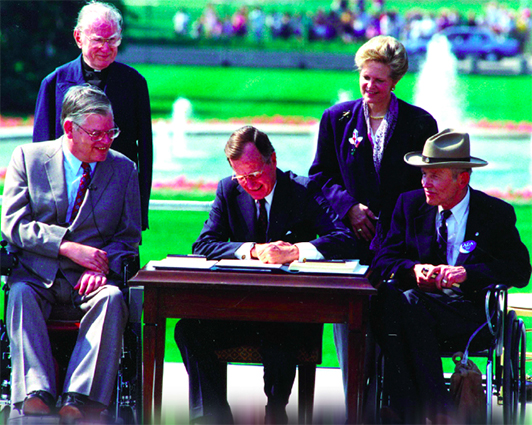
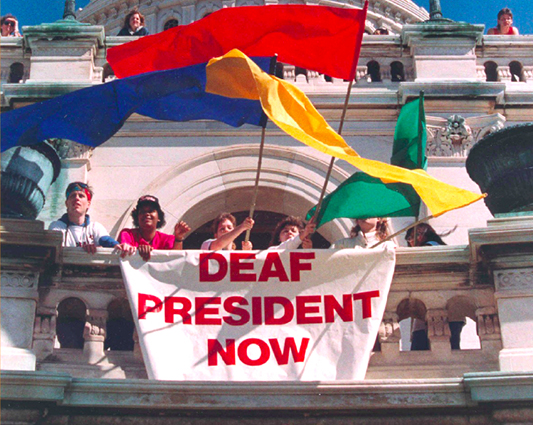
Learning Objectives
- Students will research historical timelines of different social justice movements and identify key leaders and events.
- Students will understand and provide examples of how cultural bias creates unfair social practices.
- Students will identify how individuals and groups create social change in order to establish rights and social equity.
- Students will use oral, written and multimedia materials and activities to present social justice movements in the United States.
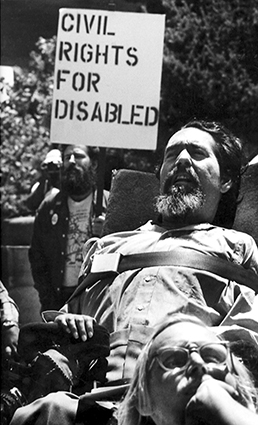
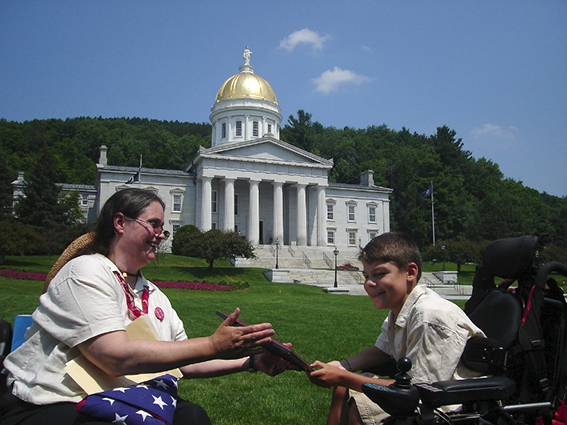
Standards
Research to Build and Present KnowledgeDraw evidence from literary or informational texts to support analysis, reflection and research.
Conduct short as well as more sustained research projects based on focused questions, demonstrating understanding of the subject under investigation.
Gather relevant information from multiple print and digital sources, assess the credibility and accuracy of each source, and integrate the information while avoiding plagiarism.
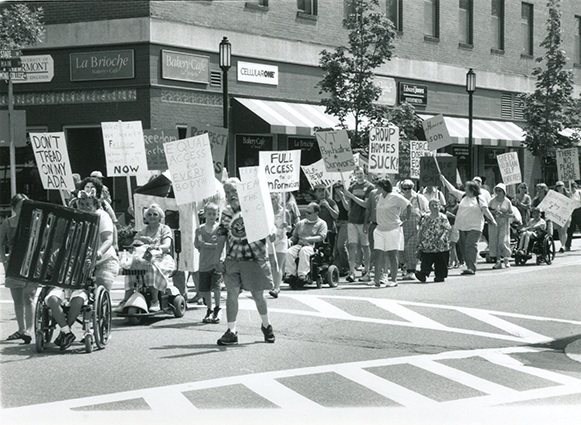
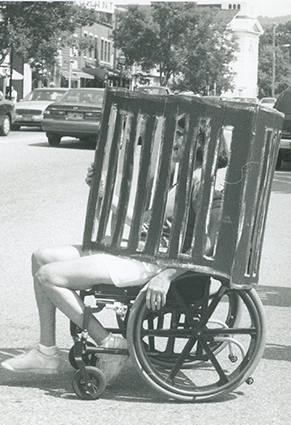
Materials
- Selected classroom, library and Internet reference materials.
- Research Worksheet for this lesson.
- Select historical websites and timelines for use in the lesson (see Resources).
- Identify potential speakers: family and community leaders/resource people knowledgeable about specific civil rights/social justice movements.
Time: Research, class discussion and activities to be done over two weeks with time for supplemental films, research and guest presentations.
Setting: Individuals and small group work and full class presentations and discussions. Student research and planning time will need to be scheduled for outside of class, either in library or study periods or as homework.
Introduction
Begin by saying that the purpose of this lesson is to explore the disability rights movement and understand what it has in common with other civil rights and social justice movements. Ask students if there are particular social justice campaigns that they are familiar with or that they and their family have been involved in. (Examples could be campaigns for workers, women, children, people with disabilities, elders, racial and ethnic minorities, and gay and lesbians). The class can select one or more civil rights movements they want to explore and compare with the disability rights movement.
Group Discussion and Decision Making: Bring the students together to discuss and agree on some questions to focus their individual or group analysis and later research. Some examples to consider are:
- What experiences brought people together to advocate for change?
- What events and which leaders stand out as you study this movement?
- What strategies did they use to push for awareness and change?
- What significant social change happened as a result of this movement?
- What barriers, challenges or issues still need to be addressed?
- What time period and event(s) or issue(s) do we most want to focus on as a class or in our individual or small group projects?
Post the chosen questions on the wall for students to refer to and also have them available as a worksheet for students to use in their work outside of class.
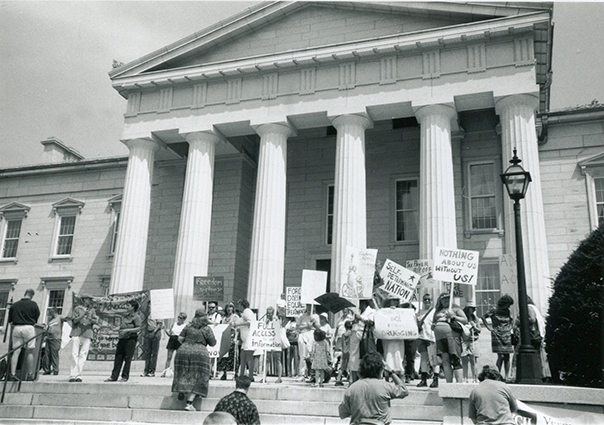
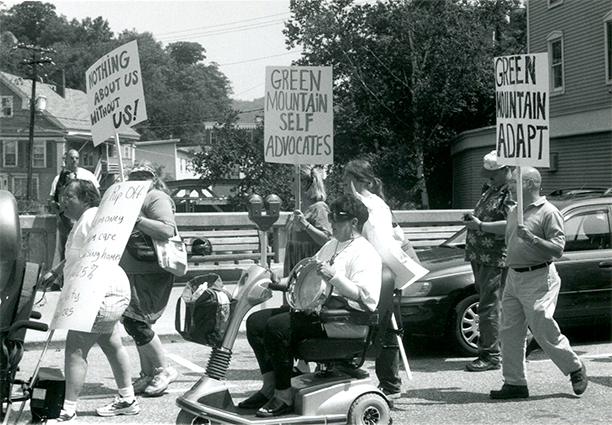
Directions
First Activity: Use the Learning from Two Movements summary provided with this lesson to help students explore some of the legal and social issues that led to social and legal action for civil rights for both blacks and persons with disabilities. Ask students to use the research questions from your earlier discussion to guide their analysis. Archival photos, films and texts are available at many of the sites listed in the Learning from Two Movements document and under Resources in this lesson.
Second Activity: Students should choose a movement or event to explore, using the same questions as the Learning from Two Movements discussion. Students can work individually or in small groups and some work could be assigned as homework or for a study hall or library time. If students are working in small groups, help them schedule planning time to develop a project and workplan that uses each member’s skills and gets all team members involved. After students have had an opportunity to do their own research, have them bring their reports back to the full group for further discussion and review.
Disability rights could be its own one-week session in a longer unit on social movements, leading to an integrated class research discussion of other social justice movements and what they have in common. Or there are several distinct movements within the broader disability rights movement (e.g., individuals with intellectual disabilities and their self-advocacy movement, the development of a self-help and social change movement of individuals with mental health conditions, veterans with disabilities, Deaf history and culture, the history of social and legal advocacy for the blind, and the development of the independent living movement). Students could break into groups to study one of these subsets of the disability rights movement, following the procedures described in this summary, or the class could study disability rights as a broad movement that includes all of these strands.
Time for Individual or Group Projects: Give students one week to do their research and collect information about the group and event(s) they are studying and another week to finalize a written or multimedia report. Work can be done in class, as homework, in study hall or during library period.
Individual student projects can and should focus on a common set of research questions, such as those listed above. At the same time, students can also identify a way to present their research that highlights their interests and abilities. One student may choose to focus on images of social change and use text as a way to organize the images into a compelling timeline. Another student may be interested in learning more about the leadership role individuals played. Another person may be great at research and want to make use of some unusual resources and sources of information.
Students who work together will need to schedule time together to select their timeline and other research materials and plan their work and the process they will use to finish a group report. The completed project portfolio should include their final report and group notes and the individual research notes or other materials done by members of the research team. Team projects are a good way to identify and make use of the stories and personal experience of some members and the research, art/graphic design, writing or presentation skills of different group members. Students will be responsible for knowing their particular tasks, completing them on time and documenting any related research or drafts they do to complete the project.
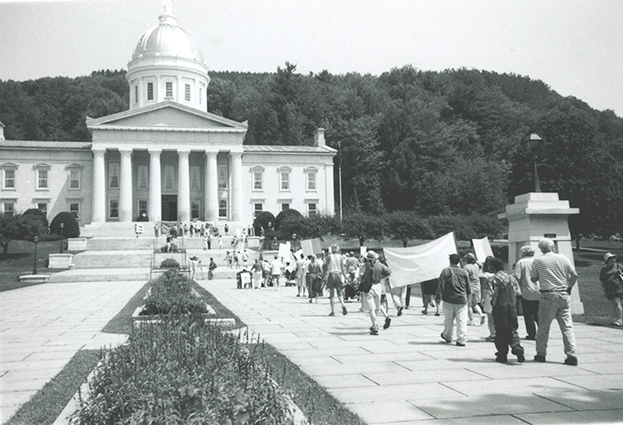
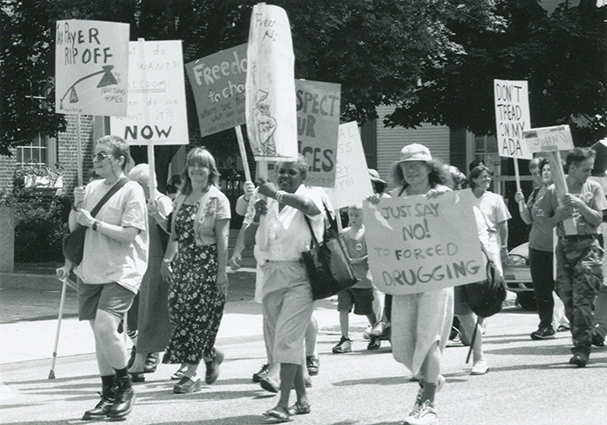
Supplemental Activity
Creating a Social Justice Gallery: Have students post their timelines on the wall or on the class website, showing the key events of each of the movements. Each timeline should have its own text color and images. Students can do their own art or use information and historical images from the Internet. Students could create a set of posters highlighting social justice themes and events from different movements or the different voices and experiences that are part of the disability rights movement.
Celebrating Disability Rights & Other Advocates for Social Justice: Have students write an essay, speech, or illustrated story on a leader they discovered during their research. An example of one student essay on civil rights leader Rosa Parks is available at Lifesaver Hero: Rosa Parks. The site also includes examples of student videos of individuals who have inspired them. The “My Hero” site is open for submissions of student essays and films on individuals who have made a positive difference in the world.
Information on disability leaders is also available in other Include! lessons and resources but students may identify others they want to profile. Include! welcomes student submissions of their essays on disability rights leaders.
Get to Know Your Local Leaders: Invite community members who are involved in disability rights and other social justice movements to come and talk about their movement’s history, current issues and how interested students can learn more and get involved in disability rights and other key social justice campaigns.
Finding Common Ground: Have students collect historical images and quotes to profile and compare similar events from different movements (e.g., Stonewall Protest, 1913 Washington, D.C. Women’s Suffrage Parade, Rehab Act or ADA protests, or one of the key civil rights marches). Discuss the common concerns and tactics and what made each successful. What kind of organizing needed to happen to bring people together? How did media coverage of the issue and events influence the success of the action?
Follow-up Discussion
Social justice is a larger issue than civil rights, though civil rights legislation is an essential part of social justice. Identify and discuss examples of discrimination that led to the advocacy for new laws protecting people with disabilities, women, people of different races, LGBT individuals and other minorities. For each movement, identify two or three significant events that were of symbolic and political importance in creating social change. Identify leaders who were instrumental in making change happen and discuss what it was about each person and his or her actions that made them successful; and identify the common tactics or strategies used by all these movements that helped make them successful. Discuss examples of the use of law in creating civil rights protections and establishing equal rights. Ask students whether they think each movement has accomplished all that is needed. What are the barriers and possible strategies for today?
Resources
General Resources
Please note that a few materials have been downloaded or adapted from these websites and are included with this lesson, in case schools have difficulty accessing any links.
The following are examples of timelines and other resources found on the web. The timelines use different formats and cover different periods of time but are useful for helping students start their independent research or as resources for developing comparative timelines in class.
Different Disability Rights Timelines and Resources
Alaska’s Governor’s Council on Disability and Special Education developed a great Disability History Exhibit. The exhibit is available online in both PDF images and as accessible HTML. The accessible HTML version makes a great display on a computer or media screen. The PDFs are wonderful posters:
http://dhss.alaska.gov/gcdse/Pages/history/html_content_main.aspx
Gallaudet University has a history exhibit, “Through Deaf Eyes”. It can be found at: https://www.gallaudet.edu/museum/deaf-historical-resources
Temple University Disability Rights Timeline:
https://disabilities.temple.edu/voices/afkol/timeline.html
Lives Worth Living:
http://www.pbs.org/independentlens/lives-worth-living/disability-rights-timeline.html.
( With graphics )
University of California at Berkeley: http://bancroft.berkeley.edu/collections/drilm/resources/timeline.html.
This timeline is easier to read than some but it only goes to 1996, leaving out later legislation. This site also includes a rich archive of oral history interviews with leaders in the disability rights and independent living movement.
Mental Health History: http://studymore.org.uk/mhhtim.htm.
Images and artifacts from disability rights history: http://everybody.si.edu/citizens/civil-rights-disability-rights.
Disability History Museum: http://www.disabilitymuseum.org/.
Museum of Disability History: http://museumofdisability.org/.
Lives Worth Living trailer: http://www.pbs.org/independentlens/lives-worth-living/film.html (2:36 minutes) The recent film presents the civil rights advocacy of people with disabilities and their allies which led to the passage of both the Rehabilitation.
Act and the Americans with Disabilities Act ( A D A ).
Other Movements
(These listings are offered as a starting point. Your class may want to study other civil rights movements by other groups in America.)
Women’s Rights Timelines and Other Resources
http://www.nwhm.org/online-exhibits/rightsforwomen/index.html
https://www.annenbergclassroom.org/resource/womens-rights/ (Includes graphics)
http://www.ibiblio.org/prism/mar98/path.html
LGBT Timeline and Resource Links
http://www.pbs.org/wgbh/americanexperience/features/timeline/stonewall/
(This site also includes links to current and historical films and other resources about the Stonewall uprising and social responses to LGBT experience.)
Black Civil Rights Movement Timelines and History
http://billmoyers.com/content/key-moments-in-the-fight-for-civil-rights/
http://www.ushistory.org/more/timeline.htm
(Shows longer history of slavery in the Unites States.)
http://www.besthistorysites.net/
(This is not a timeline but a website containing video clips and links to key civil rights history websites and collections.) (broken link)
Asian Pacific Heritage Timeline
American Indian History
http://www.thelatinlibrary.com/imperialism/notes/nativeamericanchron.html
http://www.legendsofamerica.com/na-timeline2.html (1492-1999)
Latino History
Teaching Tolerance has Latino Civil Rights Timeline. Find it at: http://www.tolerance.org/latino-civil-rights-timeline
Books
The book “Extraordinary People with Disabilities,” by Deborah Kent and Kathryn A. Quinian (Children’s Press/Grolier, 1996), includes in-depth profiles of some disability rights leaders. Other useful books on disability rights history are “The Disability Rights Movement, by Deborah Kent (Children’s Press/Grolier, 1996), and “No Pity” by Joseph Shapiro, (Broadway Books, 1994).
Acknowledgement
The activity “Learning from Two Civil Rights Movements” was inspired by the work of Alice Leeds, a fifth/sixth-grade teacher at the Lincoln, Vt., Middle School. Alice and her co-teacher and students combined this history activity with other activities, including poetry writing, artwork, and the production of a play based on the book, “Out of My Mind,” by Sharon Draper. Their work was truly inspiring and a joy to see.